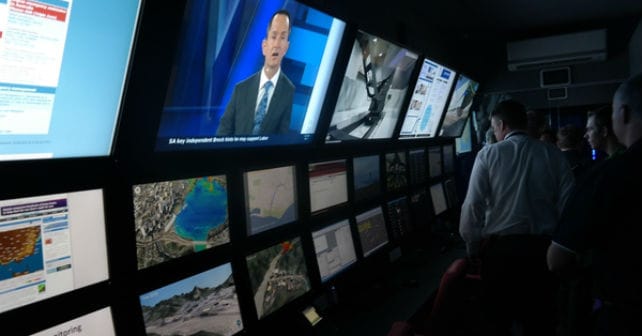Don't measure energy ... model it
 Large data centre operators are getting better at monitoring and measuring their energy use, but those measurements still don’t provide enough insights to fully tame power-hungry computing beasts. And however detailed measurements might be, they can’t predict what a data centre’s energy footprint will look like six months or a year from now.
Large data centre operators are getting better at monitoring and measuring their energy use, but those measurements still don’t provide enough insights to fully tame power-hungry computing beasts. And however detailed measurements might be, they can’t predict what a data centre’s energy footprint will look like six months or a year from now.
The answer, say Zahl Limbuwala and Liam Newcombe, lies not with ever more metering but with power consumption modelling that can reveal previously unidentified energy drains, equipment interactions and usage trends. And that’s what they’ve developed after long years of work at their UK-based company, Romonet.
Released just this week, Romonet’s Prognose software suite takes “a fundamentally different approach” from other data centre energy monitoring tools, Limbuwala says. Rather than metering power consumption to get a picture of what’s happening now, Prognose uses energy modelling to help users better understand how all the different elements of a data centre interact over time, and where the greatest efficiencies can be gained.
That approach not only helps users see how energy flows through a data centre but gives them a detailed picture of cost flows … in terms of both pounds or dollars, and carbon emissions. And by being able to model different combinations of equipment, users can discover unexpected opportunities for efficiency improvements, Limbuwala says.
In developing the software, Limbuwala and Newcombe say they were often surprised by the results they obtained.
“We probably know more about data centres than anyone on the planet at the moment, and we’ve learned an awful lot,” Limbuwala says. “The software’s taught us a huge amount.”
In fact, he adds, during tests, they discovered “every single time, our preconceptions were wrong.”
“It won’t give you the answers you’re expecting,” Newcombe says, meaning “perhaps you should be asking different questions.”
For example, he says, swapping out one uninterruptible power supply for a more efficient one didn’t produce the energy savings they expected.
“Energy flow has more of an impact than (changing) individual devices,” Newcombe says.
Limbuwala and Newcombe also designed their software suite to be used by more than just the IT department. Featuring a number of different interfaces for different disciplines, Prognose can provide department-specific insights for chief finance officers, chief information officers, heads of corporate social responsibility and other executives.
“These people don’t talk to each other at the moment,” Newcombe says. The Prognose suite is designed to help them do that by “speaking” to them in the languages each department head understands.
“Most people who operate data centres are well aware of the things they could do (to improve efficiency),” he adds. “But it’s hard to get business customers to agree to changes without a business case.”
Romonet’s software, he says, helps make that case.




